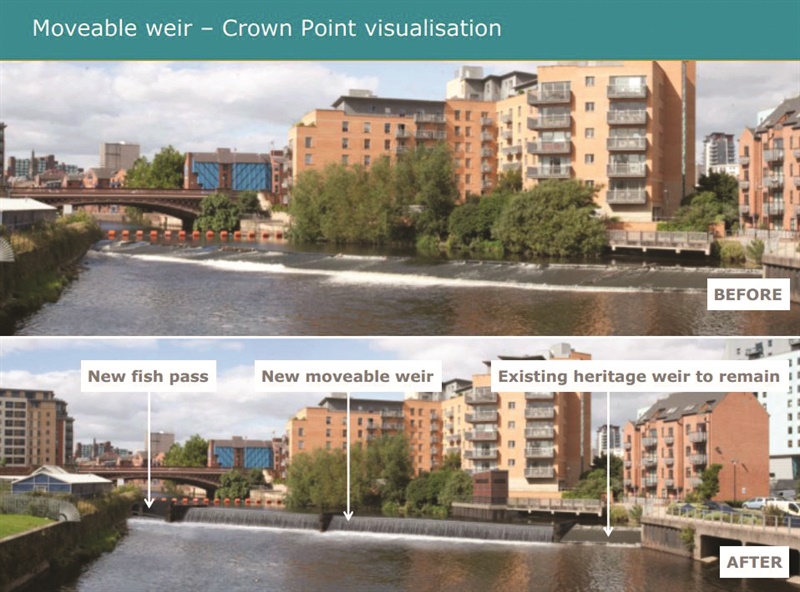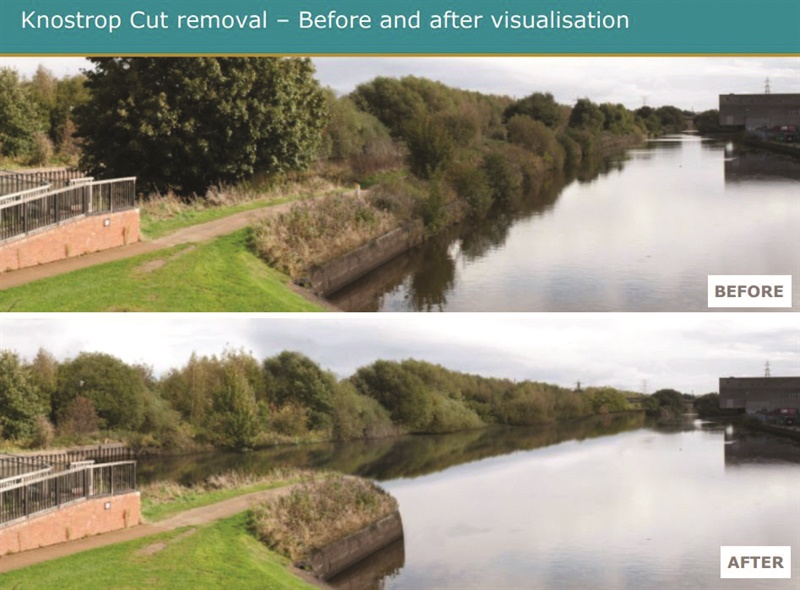26.06.14
Leeds pressing ahead with cutting-edge flood defence scheme
Source: Public Sector Executive June/July 2014
Work is now underway on Leeds’ £50m Flood Alleviation Scheme, which includes a system of moveable weirs never before used in the UK. David Stevenson reports.
Work on the new £50m Flood Alleviation Scheme (FAS) in Leeds, which will protect hundreds of business and thousands of homes in the city against a 1-in-75 year flood event from the River Aire, has begun.
The Woodlesford Enabling Works have already been awarded to BAM Nuttall, and are due to be completed in July 2014.
The main works contract (City centre and Holbeck) is out to tender, due to be returned towards the end of July, and it is anticipated that this contract will commence in August.
All works on the FAS, which will protect Leeds city centre from flooding between Leeds Station and Knostrop Weir, are programmed to be complete before the end of 2016.
Currently there are no formal flood defences along the River Aire, but it is clear something is needed: Leeds narrowly avoided major flooding in 2000 with further near-misses in 2004, 2007 and 2008.
Cutting-edge technology
Earlier this year, Leeds City Council’s executive board finally approved details of the City centre and Holbeck scheme that will see the replacement of the existing fixed weirs at Crown Point and Knostrop with moveable weirs that can be lowered in flood conditions to reduce river levels and the threat of river flooding.
Cllr Richard Lewis, executive member for the economy and development, said: “This is a vitally important scheme for the city, not just because of the threat to lives and property from floods but also the positive impact it will have on the growth and regeneration of the Leeds economy, particularly the South Bank area.”
The use of moveable weirs will place Leeds at the forefront of national flood defence schemes.

This pioneering technology will also be the first of its kind to be installed in the UK, although they are tried-and-tested in other countries.
Also as part of the FAS, an island at Knostrop Cut, which separates the river from the canal, will be removed to allow the river and canal to merge. This will create additional ‘flood storage’ to assist the flow of water to lower water levels in flood conditions. Low-level flood defences in the city centre will also be constructed.

Adrian Gill, flood risk manager at the Environment Agency, said: “Leeds has narrowly avoided significant flooding to the city centre on a number of occasions in recent years.
“The Environment Agency, Leeds City Council and everyone involved in the project have worked extremely hard over many years to develop a workable scheme for Leeds and secure the necessary funding.”
Funding
The scheme, costing about £50.5m, is being funded through a partnership supported by Defra and the Treasury, Leeds City Council and local businesses.
The council says it is important to understand that a 1-in-75 chance of flooding in any one year does not mean that level of flood will happen once every 75 years. Nor does it mean that if the flood hasn’t happened for the last 74 years, it will happen this year. ‘Any one year’ means exactly what it says, in that the risk is expressed on a yearly basis. A flood may also occur more than once in a year.
Over the next decade, it is expected that almost 19,000 jobs will be created within the protected area, so the new defences will play a vital role in protecting the economy of Leeds.
Environment secretary Owen Paterson MP said: “We are spending more than ever before to protect our economy from the risk of flooding and this new defence will do exactly that.”
Defra added that across the country, 55 flood defence schemes will begin construction this year, better protecting 43,000 properties.
On top of this, the government is spending £3.2bn on flood management and protection from coastal erosion over the course of the current parliament.
Prior to the current FAS getting approval, the Environment Agency, in partnership with the council, had developed a more extensive FAS for the River Aire based on the construction of flood defence walls from Kirkstall to Woodlesford.
This scheme would have provided protection against a flood event that could occur once every 200 years giving a 1:200 year standard of protection. However, the cost of this scheme, at £190m, was judged too expensive to fund. Looking to the potential success of the current FAS project, though, Cllr Lewis stated: “By using cutting-edge flood defence technology, we can provide sound flood defence for the city that is good value for money, as we have to weigh the cost of the scheme against the potential costs that would be caused by flooding to the city centre.”
Tell us what you think – have your say below or email [email protected]